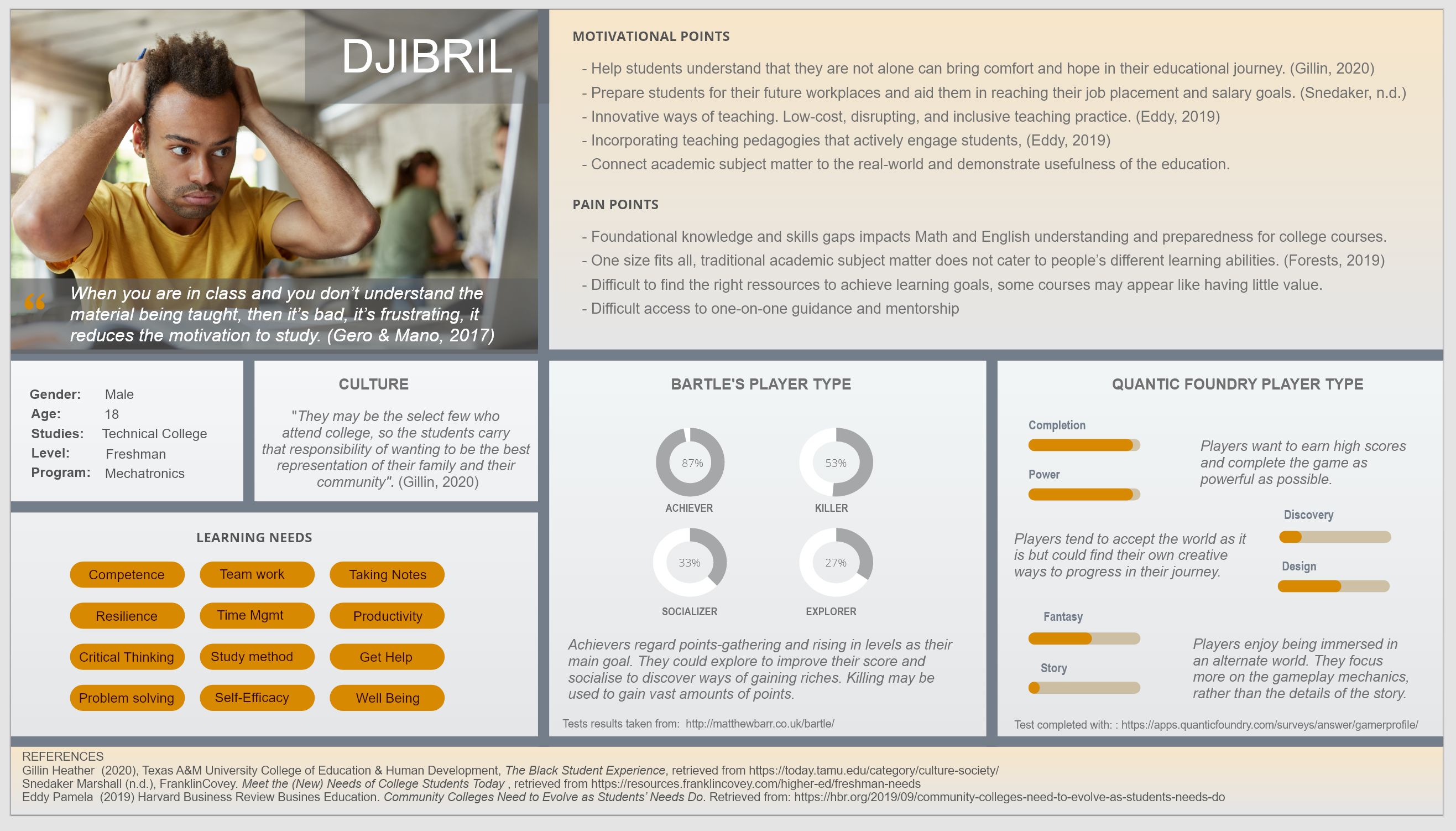Part 1: Gather & Analyze Some Information
I researched and found articles and research sources to compare/contrast their findings. I analyzed what is unique and essential to my target audience. I summarized my learner-player persona’s learning needs, frustration, and motivation points. I also cited and inserted three references I selected at the bottom of the card.
In addition, I discussed with one adult who experienced difficulties learning mathematics in junior high school and was sent to pursue her schooling in a vocational program. We had such different academic paths that I can use her comments to see which ones align with what my students tell me. We did the Bartle’s (the French version was awkward) and Quantic Foundry’s player type together to answer the closest we imagined our students would respond.
I was not able to interview or survey students due to time constraints. I would have to prepare a specific survey or a questionnaire in French or Creole and find a teacher to allow me to borrow their students for 15 minutes. Then, translate back, but this could be awkward since the culture here in Reunion Island is unique and different from US technical and community colleges. Anyway, the assignment helped me to think about this preparation phase and how much time and effort must be planned.
Part 2: Develop One Learner-Player Persona
I used my preferred design tool (adobe XD) and a photo from Adobe Stock to create my persona card. I was inspired by a few cards I could find with a search engine that gave me the ideas I needed to create a unique layout tailored to my content. I did not cite them; I only borrowed some general UX ideas and made my own from scratch.
See my learner-player persona here. This persona will evolve as I plan to iterate on this as I will continue the design phase and refine the key points.
See screenshot below. Click here for the online “LIVE” version

Part 3: Test Your Persona, Game/Simulation Alignment
The games/simulations I found did not fit well with my persona. On one side, the learning simulation and games used in an academic setting would probably be uninteresting. On the other hand, the games I found needed to include more learning needs. First, I will need a realistic simulation base having math and physics phenomena rigorously calculated and rendered in a real-world (with a twist of fantasy) setting. Something that would make the problem to solve intriguing and activate students’ curiosity. Due to their player types, the game will also include appealing mechanics, such as remotely controlling the motion of a car (not just activating signal traffic). There will be plenty of data to show what is invisible. The first levels should be easy (in a complex environment) to make learners at ease and feel smart to continue. The scaffolding will get less and less. Ultimately, I imagine a learner creating a model and testing it to feel competent about the entire process (still to be defined), including the basics maths and required.